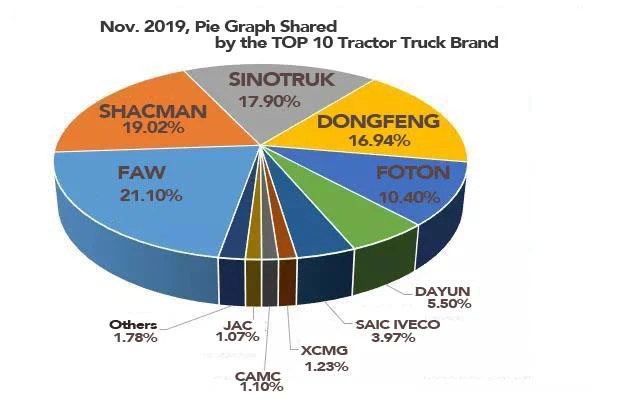What Does Vehicle Identification Number Mean? A Comprehensive Guide

Introduction
The Vehicle Identification Number (VIN) is a vital component of every motor vehicle manufactured after 1981. Serving as a unique identifier, the VIN plays a crucial role in various aspects of vehicle ownership, including registration, insurance, and tracking the vehicle’s history. In this article, we will explore the in-depth meaning of the VIN, its significance, and how it can be utilized effectively. We will also cover the structure of the VIN, decoding its components, and provide practical examples and tips for vehicle owners. Let’s embark on a journey to understand everything about VINs!
What is a Vehicle Identification Number (VIN)?
A Vehicle Identification Number (VIN) is a 17-character code that uniquely identifies a vehicle. It contains a combination of letters and numbers that provide specific details about the vehicle. The VIN can be used to track vehicle history, verify ownership, and assess insurance credentials. It is usually located on the dashboard near the windshield or on the driver’s side door frame.
Importance of the VIN
The VIN is essential for several reasons, including:
- Unique Identification: Every vehicle has a distinct VIN, ensuring that it can be identified separately from all others.
- Trackable History: The VIN links to the vehicle’s history, allowing potential buyers to check for past accidents, repairs, and even theft.
- Legal and Registration Purposes: The VIN is required for registration and licensing of the vehicle in various jurisdictions.
- Insurance: Insurance companies use the VIN to assess vehicle value and inform policies.
Structure of a VIN
The VIN is composed of 17 positions, each serving a purpose. Here’s a breakdown of its structure:
| Position | Description | Meaning |
|---|---|---|
| 1-3 | World Manufacturer Identifier (WMI) | Indicates the vehicle’s manufacturer and country of origin. |
| 4-8 | Vehicle Descriptor Section (VDS) | Describes the vehicle’s model, body type, restraint system, and engine type. |
| 9 | Check Digit | Used to validate the VIN’s authenticity. |
| 10 | Model Year | Indicates the year the vehicle was manufactured. |
| 11 | Plant Code | Identifies the assembly plant where the vehicle was produced. |
| 12-17 | Vehicle Serial Number | Uniquely identifies the vehicle within the manufacturer’s range. |
How to Decode a VIN
Decoding a VIN can provide vehicle owners with essential information about their cars. Here’s how to decode a VIN:

Identifying the WMI
The first three characters of the VIN consist of the World Manufacturer Identifier (WMI). For example, if the WMI is “1HG,” it signifies that the vehicle is manufactured by Honda in the United States.
Understanding the VDS
Positions four through eight comprise the Vehicle Descriptor Section (VDS). This section provides details such as body type (sedan or coupe) and engine specifications.
Checking the Check Digit
The ninth position in the VIN is the check digit, which confirms the VIN’s authenticity. A specific formula is used to calculate this digit based on the preceding digits.
Interpreting the Model Year
The tenth position indicates the model year of the vehicle. For instance, “L” signifies that the vehicle was manufactured in 2020.
Finding the Assembly Plant
The eleventh character identifies the manufacturing plant, while the last six characters provide the unique serial number of the vehicle.
Vehicle History Reports and Their Significance
One of the most significant uses of the VIN is obtaining a vehicle history report. These reports provide crucial information such as:
- Accident History
- Service and Repair Records
- Title Status (Salvage, Rebuilt, etc.)
- Odometer Readings
- Past Ownership Information
Many online services offer vehicle history reports based on the VIN, such as Carfax and AutoCheck. These reports can be invaluable when buying a used vehicle, as they can help you avoid potential pitfalls.
How to Find Your Vehicle’s VIN
Finding a vehicle’s VIN can be simple. Here are a few common locations:

Common Locations for VIN
- On the dashboard, near the windshield
- On the driver’s side door post
- Under the hood, near the engine block
- On the insurance card or membership certificate
- In your vehicle registration documents
Practical Tips for Vehicle Owners
Regular VIN Checks
It’s important to regularly check your VIN. This can help you to easily access maintenance records and identify any issues in vehicle history.
Use VIN for Insurance Quotes
When seeking insurance quotes, provide your VIN for accurate estimates. Insurance premiums can vary based on vehicle specifications.
Buy a History Report Before Purchase
Before purchasing a used vehicle, always obtain a vehicle history report using the VIN. This will help you make an informed decision.
Secure Your VIN
Keep your VIN confidential as it can be misused for fraudulent purposes. Avoid sharing it in public forums or social media.
Common Misconceptions About VINs
- All VINs have 17 characters: While most vehicles manufactured after 1981 adhere to the 17-character rule, some older vehicles may have shorter VINs.
- VINs can be changed: It is illegal to alter a vehicle’s VIN. If you suspect tampering, report it to authorities.
- Every VIN is unique: While VINs are meant to be unique, errors can happen, and duplicate VINs can occur in some rare cases.
FAQs

What should I do if my VIN is missing or damaged?
If your VIN is missing or damaged, contact your vehicle manufacturer or your local Department of Motor Vehicles (DMV) for guidance on how to proceed.
Does the VIN reveal the vehicle’s age?
Yes, the tenth character of the VIN indicates the vehicle’s model year, which can help determine its age.
Can I change my vehicle’s VIN?
It is illegal to change or manipulate a VIN on a vehicle. If there are issues with your VIN, report them to the authorities.
How do I use a VIN to check for recalls?
You can check for recalls by entering your VIN on the National Highway Traffic Safety Administration (NHTSA) website or the vehicle manufacturer’s website.
Can the same VIN be issued for different vehicles?
Each VIN is unique and should not be issued for different vehicles. If you encounter what appears to be a duplicate VIN, report it as it may indicate fraud or an error.
How often should I check my vehicle’s history report?
It’s advisable to check your vehicle’s history report when buying a used vehicle and periodically during your ownership to stay informed of any new developments.
